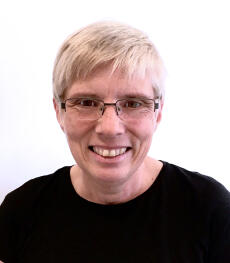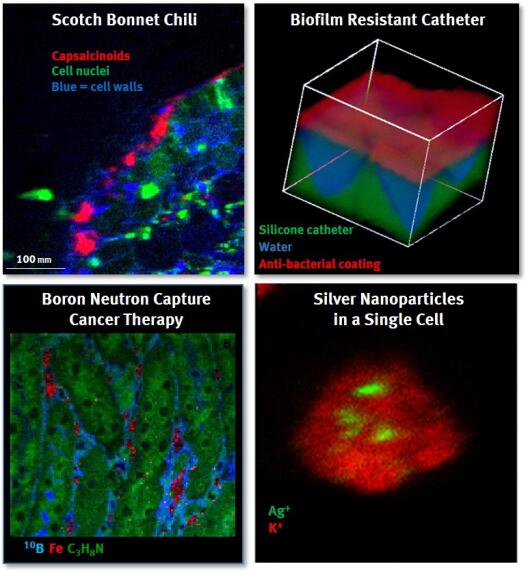
Imaging with the Tof-SIMS
Dr. Bonnie Tyler, Research Group Arlinghaus
Research: “I conduct secondary ion mass spectroscopy (SIMS) analysis using the Tof-SIMS, a device for 3D chemical imaging down to 100 nanometer resolution. Essentially, I take materials and discover not only their chemical composition, but the way those chemical species are distributed in three dimensions.
My personal research seeks to improve ToF-SIMS sensitivity, spacial resolution and data interpretation. I also apply the ToF-SIMS technique in collaboration with other research projects at the Center for Soft Nanoscience (SoN). The measurements I do can verify whether the chemistry or materials processing done in SoN laboratories actually behaved as it was predicted. In some cases I help figure out why a result didn’t work or add understanding to unexpected behavior of samples. The process is often iterative as researchers use the chemical insight from my measurements to determine what happened in an experiment and improve the next round of experiments.”
About the Tof-SIMS: The ToF-SIMS device is manufactured by the company IONTOF, right next door to the SoN. It is a spin off from the Physics Department here at the University and has a large market in Asia and Europe with the semi-conductor industry. The ToF-SIMS machine is located in the SoN, in the Münster Nanofabrication Facility (MNF), a special cleanroom environment.
Why she became a scientist: “I like the creative aspect of science. I enjoy solving problems and puzzles. Scientists are curious people who ask questions and explore. We also write and present in front of people, so communication is as important as math skills. Science brings together things that interest me.”

Likes about the SoN: “I like working with students, which is why I appreciate working at the SoN. It is much nicer than working at a distance. Sitting in the same building with student scientists means I get immediate feedback. We can look at samples right away and adjust them immediately. Also, we have the opportunity to sit and discuss and generate new ideas. For example, the other day Anzehla Galstyan walked by my office, and we realized through a spontaneous conversation that we could incorporate bio-films, her area of expertise, into some experiments and write a new DFG proposal. That is the kind of synergy you want: where people see each other.
I also like that the SoN is international. Of course, generally, the culture of science is extremely international. Additionally, I like that there is an emphasis on social activities at the SoN, with a brown bag lunch and talks for junior researchers and a fruit break once a week. It is important to break down barriers and get people to interact and think interdisciplinary.”
Previous workplace: “I worked in U.S. and Caribbean universities. Most recently, I worked in England at the National Physics Laboratory.
I have been collaborating with Professor Arlinghaus for over a decade after meeting him at a conference in Japan. I visited IONTOF with him and we talked about collaborative projects. I’ve been coming to Münster every summer to do measurements together with him. Later he told me he had a position here working with this unique instrumentation.”
Wishes: a SoN seminar series with guest speakers from outside the University, preferably with leaders in different fields
Links:
Nanoanalysis with ToF-SIMS/Laser-SNMS
Münster Nanofabrication Facility
IONTOF

